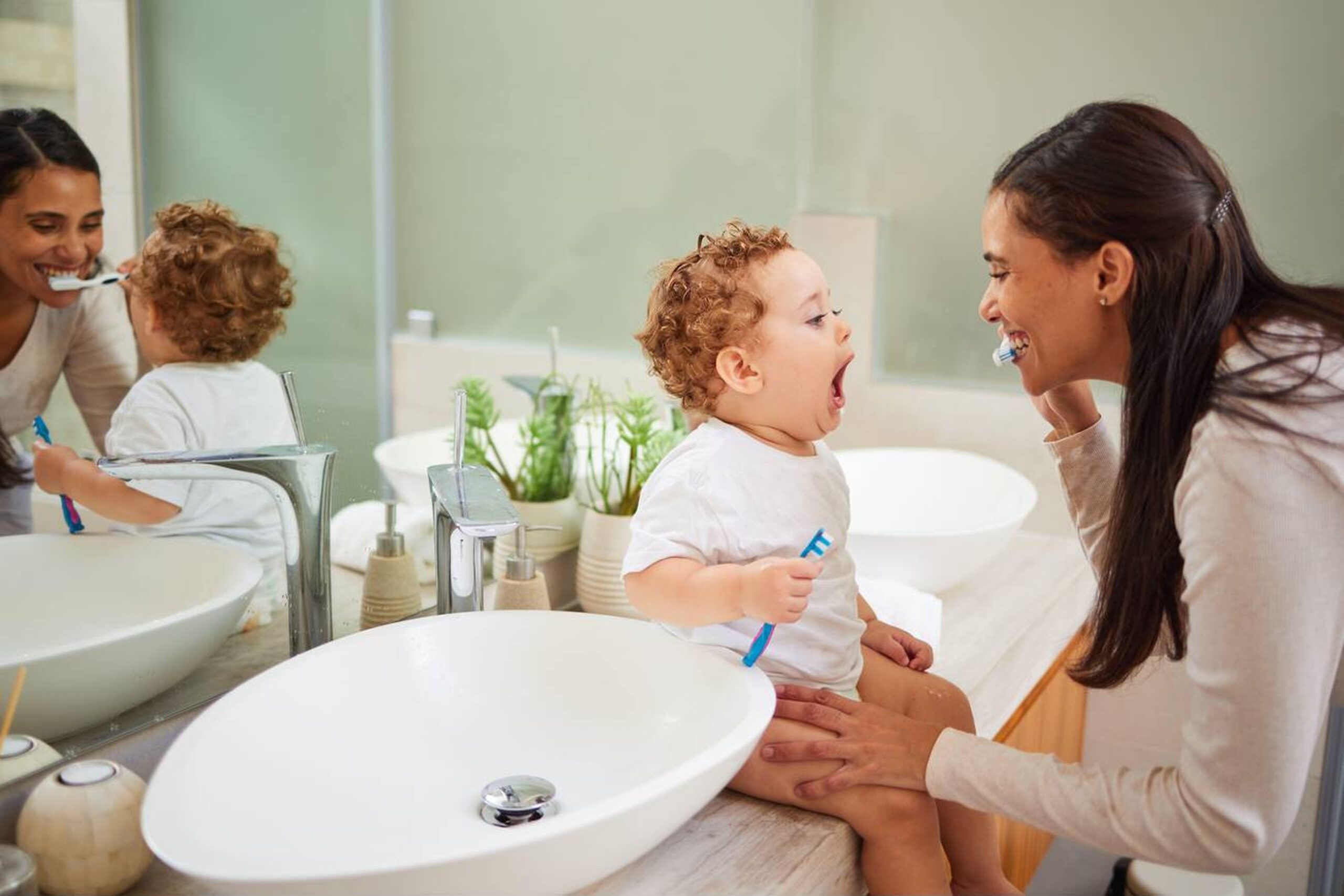Choosing the right brush for my baby is a crucial step in maintaining their oral health from an early age. When it comes to selecting a brush for your baby, parents often find themselves overwhelmed by the variety of options available.
From infant toothbrushes with soft bristles to finger brushes designed for sensitive gums, the market offers a wide range of tools to clean a baby’s mouth and promote dental health.
Understanding the importance of early oral care has a significant impact on a child’s overall well-being.
This article aims to guide parents through the process of selecting the perfect brush for their baby’s teeth.
It will cover the different types of baby toothbrushes available, including BPA-free options and biodegradable toothbrushes.
The guide will also discuss when to start brushing baby teeth, how to use a baby teeth cleaner effectively, and tips for addressing teething troubles.
By the end, parents will be equipped with the knowledge to make an informed decision about their child’s oral care routine.
Understanding Baby Oral Care Needs
Importance of early dental hygiene
Early oral care plays a crucial role in a child’s overall well-being. It helps develop a healthy smile that can last a lifetime. Even before the first tooth emerges, infants are born with a complete set of 20 primary teeth below the gum line.
This means that babies can develop tooth decay even before their first tooth appears. Proper oral hygiene from birth significantly decreases the risk of decay and incorrect eruption of permanent teeth later on.
When to start brushing
Parents should begin oral care for their babies immediately after birth. For infants aged 0-6 months, gently clean the gums with a clean, damp washcloth or gauze pad after every feeding.
When the first tooth emerges, typically between 6-8 months, switch to lightly brushing the teeth and gums with a soft-bristled toothbrush without toothpaste. By 12-18 months, parents should brush the child’s teeth twice daily with plain water.
Unique considerations for baby teeth
Baby teeth serve several important functions. They hold spaces open for adult teeth, shape the face, aid in clear speech, and facilitate chewing and eating.
To prevent cavities, avoid putting a baby to sleep with a bottle filled with milk, juice, or sugary drinks.
This practice can lead to serious tooth decay, particularly affecting the upper front teeth. Regular dental check-ups are essential, with the first visit recommended by the child’s first birthday or within six months after the first tooth appears.
Types of Baby Toothbrushes
Finger brushes
Finger brushes are an excellent option for introducing oral care to infants. These brushes fit over a parent’s finger and help babies get accustomed to the sensation of brushing. They are effective as training tools and can also provide relief during teething.
However, it’s important to note that while finger brushes are useful for establishing a daily brushing routine, they are not as effective as regular toothbrushes for removing plaque from teeth.
Silicone brushes
Silicone brushes have gained popularity for baby oral care due to their gentle nature. They feature soft, flexible bristles that clean the gums while providing a massaging action.
This dual function helps relieve teething discomfort and makes the brushing experience more pleasant for babies.
Silicone brushes are often designed with features like sensory bumps and easy-to-grip handles, which can improve hand-to-mouth coordination and support pre-feeding skills.
Soft-bristled brushes
As soon as a baby’s first teeth emerge, dental professionals recommend transitioning to a soft-bristled toothbrush. These brushes come in various levels of softness, including extra soft, soft, and medium soft.
When selecting a soft-bristled brush for a baby, parents should consider factors such as a small head size that fits comfortably in the child’s mouth, a short handle to prevent choking hazards, and secure bristles that don’t fall out.
Reputable brands like Colgate and Oral-B offer age-appropriate toothbrushes that meet these criteria.
Choosing the Right Brush for Your Baby
When selecting a brush for a baby’s teeth, parents should consider age-appropriate options, material and safety considerations, and ergonomics.
For newborns and infants without teeth, a finger brush or clean wipes are suitable for gum cleaning. These tools help remove bacteria from formula or breast milk sugars.
Age-appropriate options
As teeth emerge, typically between 6-8 months, parents can transition to soft-bristled toothbrushes designed for infants. Toddler toothbrushes, slightly larger with extra-soft bristles and short handles, are appropriate for children aged 1-3 years.
For children aged 0-4, electric toothbrushes with silicone bristles offer gentle plaque removal and can help establish proper brushing habits.
Material and safety considerations
Silicone toothbrushes are considered highly hygienic and safe for babies. They repel bacteria more effectively than nylon bristles. Parents should choose BPA-free and PVC-free products to ensure safety.
Bamboo toothbrushes offer an eco-friendly alternative, being biodegradable and sustainable.
Ergonomics and ease of use
Toothbrushes for babies and toddlers should have shorter handles for safety and round comfort grips.
Some designs feature fun shapes or characters to make brushing enjoyable. Wide, ergonomic handles with holes in the middle can be easier for tiny hands to grasp, promoting independence in oral care routines.
Conclusion
Selecting the right toothbrush for your baby is a crucial step to establish good oral hygiene habits from the start.
This guide has explored various aspects of baby oral care, including the importance of early dental hygiene, different types of baby toothbrushes, and key factors to consider when choosing a brush.
By understanding these elements, parents can make informed decisions to protect their child’s dental health and lay the groundwork for a lifetime of healthy smiles.





